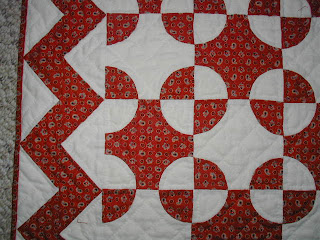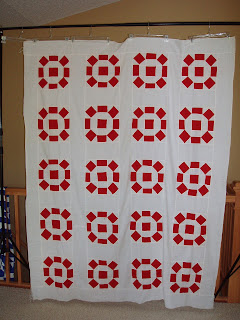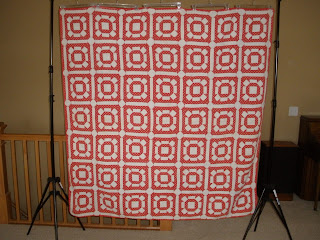It has been speculated that this design, worked in blue and white, may have a connection to the Women's Temperance Union, (WCTU), whose official colors are blue and white. Organized in 1874 by women who saw the tremendous problems alcohol was causing in both families and in society as a whole, the movement was, in part, a protest about civil rights. At that time women could not vote. A divorced woman had no control of her property or her children. Women and children had no legal protection. Rape was seldom prosecuted and the 'age of consent' was as low as seven in some areas. The WCTU still exists today; in fact it is the oldest voluntary, non-sectarian women's organization in continuous existence in the world.
BUT -
According to Wilene Smith, on Quilt History Tidbits, this connection has yet to be proven. Check it out for more interesting reading and examples of the many arrangements and names for this block.
She also notes that there are more "T" quilts than any other letter. Do they have a connection toTemperance?
I'll reiterate what Wilene asks; if you have evidence that would substantiate the connection between either the Drunkard's Path or the "T" block quilts to the WCTU please come forward.
Now this one leaves no doubt!
With permission from The Quilt Complex
By the way, I am hoping someone will come forward with about 650 blue and white quilts for an exhibit. I suggest the midwest....Minneapolis, for instance!






















